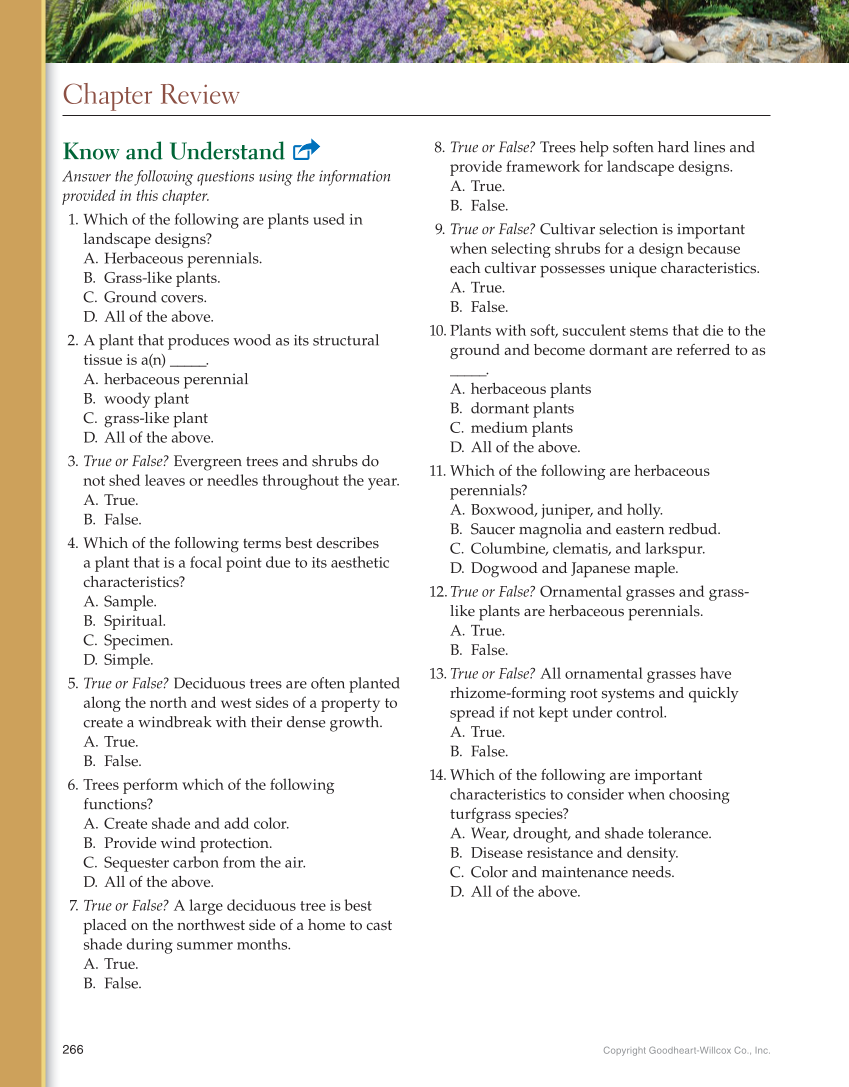Copyright Goodheart-Willcox Co., Inc. 266 Chapter Review Know and Understand Answer the following questions using the information provided in this chapter. 1. Which of the following are plants used in landscape designs? A. Herbaceous perennials. B. Grass-like plants. C. Ground covers. D. All of the above. 2. A plant that produces wood as its structural tissue is a(n) _____. A. herbaceous perennial B. woody plant C. grass-like plant D. All of the above. 3. True or False? Evergreen trees and shrubs do not shed leaves or needles throughout the year. A. True. B. False. 4. Which of the following terms best describes a plant that is a focal point due to its aesthetic characteristics? A. Sample. B. Spiritual. C. Specimen. D. Simple. 5. True or False? Deciduous trees are often planted along the north and west sides of a property to create a windbreak with their dense growth. A. True. B. False. 6. Trees perform which of the following functions? A. Create shade and add color. B. Provide wind protection. C. Sequester carbon from the air. D. All of the above. 7. True or False? A large deciduous tree is best placed on the northwest side of a home to cast shade during summer months. A. True. B. False. 8. True or False? Trees help soften hard lines and provide framework for landscape designs. A. True. B. False. 9. True or False? Cultivar selection is important when selecting shrubs for a design because each cultivar possesses unique characteristics. A. True. B. False. 10. Plants with soft, succulent stems that die to the ground and become dormant are referred to as _____. A. herbaceous plants B. dormant plants C. medium plants D. All of the above. 11. Which of the following are herbaceous perennials? A. Boxwood, juniper, and holly. B. Saucer magnolia and eastern redbud. C. Columbine, clematis, and larkspur. D. Dogwood and Japanese maple. 12. True or False? Ornamental grasses and grass- like plants are herbaceous perennials. A. True. B. False. 13. True or False? All ornamental grasses have rhizome-forming root systems and quickly spread if not kept under control. A. True. B. False. 14. Which of the following are important characteristics to consider when choosing turfgrass species? A. Wear, drought, and shade tolerance. B. Disease resistance and density. C. Color and maintenance needs. D. All of the above.
